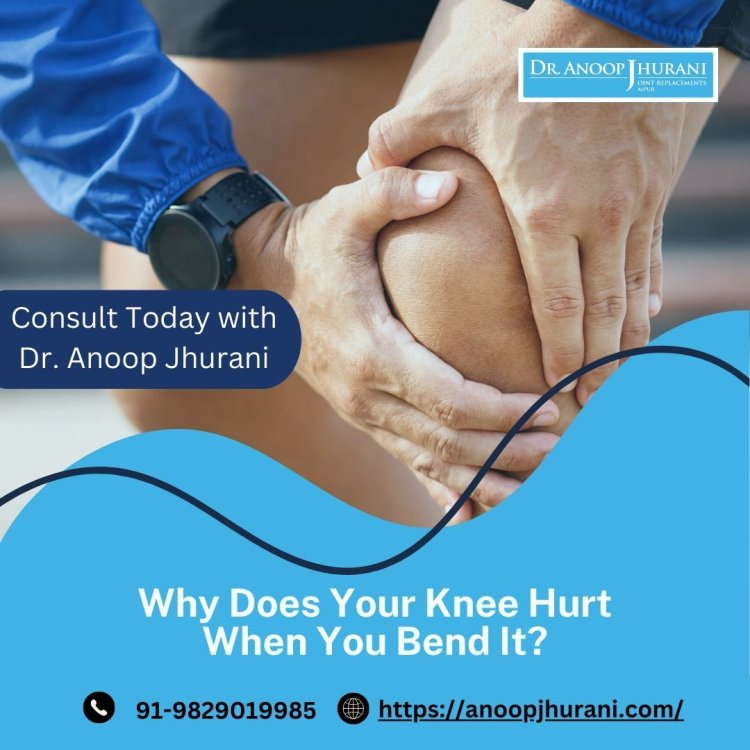Understanding Knee Pain When Bending: Causes and Solutions
Dr. Anoop Jhurani is a Robotic knee replacement doctor in Jaipur, India. Book an appointment online with Dr. Anoop Jhurani for treatment.
Share this Post to earn Money ( Upto ₹100 per 1000 Views )

Knee pain while bending is a common complaint ranging from mild discomfort to severe pain, significantly impacting daily life. Whether you experience this pain during exercise, stretching, or simple movements, understanding the underlying causes can help you find relief and improve your overall knee health.
Common Causes of Knee Pain When Bending
1. Osteoarthritis: Osteoarthritis is a degenerative joint disease that causes the cartilage in the knee to wear down over time, leading to pain and stiffness, especially when bending the knee.
2. Meniscus Injuries: The meniscus is a piece of cartilage that provides a cushion between your thighbone and shinbone. A torn meniscus can cause pain, swelling, and difficulty bending the knee.
3. Patellar Tendinitis: Also known as jumper’s knee, patellar tendinitis is an overuse injury that affects the tendon connecting the kneecap to the shinbone, causing pain during activities that involve bending the knee.
4. Bursitis occurs when the bursae, small fluid-filled sacs that cushion the knee joint, become inflamed. This can lead to pain and swelling, particularly when bending the knee.
5. Ligament Injuries: Injuries to the ligaments, such as the ACL or MCL, can cause knee pain and instability, especially during movements that involve bending or twisting the knee.
6. Inflexible Knee Muscles: Tight or inflexible muscles around the knee can contribute to pain when bending, as they put additional strain on the knee joint.
Duration of Recovery After Robotic Knee Replacement
Robotic knee replacement surgery is a cutting-edge procedure that offers precision and accuracy, leading to better outcomes and quicker recovery times compared to traditional knee replacement methods. Under the expert direction of Dr. Anoop Jhurani, one of the leading robotic knee replacement surgeons in Jaipur, India, patients can expect significant improvements in their knee function.
· Initial Recovery Period: The initial recovery period typically lasts about 3 to 6 weeks. During this time, patients focus on reducing swelling, managing pain, and gradually increasing knee movement through physical therapy.
· Return to Normal Activities: Most patients can return to their normal routine activities within 3 to 6 weeks after the initial recovery period. This includes walking, climbing stairs, and engaging in light exercises.
· Long-Term Outcomes: Patients who undergo robotic knee replacement surgery often report a significant reduction in joint discomfort and an improvement in their ability to participate in daily activities once they fully recover. The precision of robotic surgery ensures better alignment and durability of the knee implant, contributing to long-term success.
Conclusion
Knee pain when a variety of factors, including osteoarthritis, meniscus injuries, and patellar tendinitis can cause bending. Understanding the cause of your pain is the first step toward finding effective treatment and relief. For those requiring knee replacement surgery, advancements in robotic technology, as practiced by Dr. Anoop Jhurani, offer promising solutions with quicker recovery times and lasting results. If you or a loved one suffers from knee pain, consider consulting with Dr. Anoop Jhurani to explore the benefits of robotic knee replacement and achieve a pain-free lifestyle.






